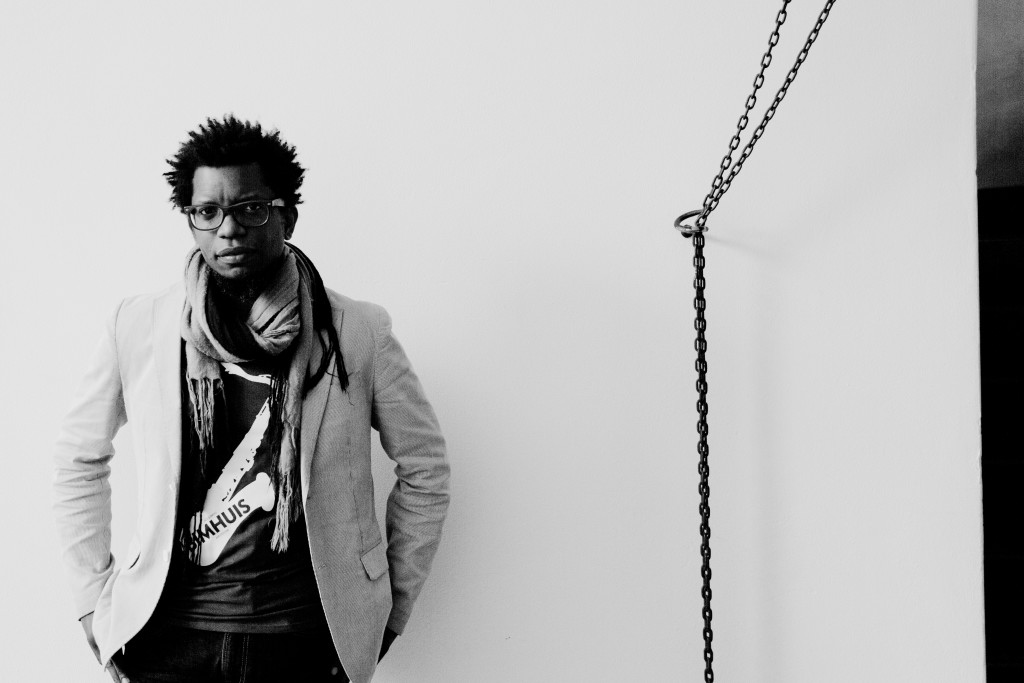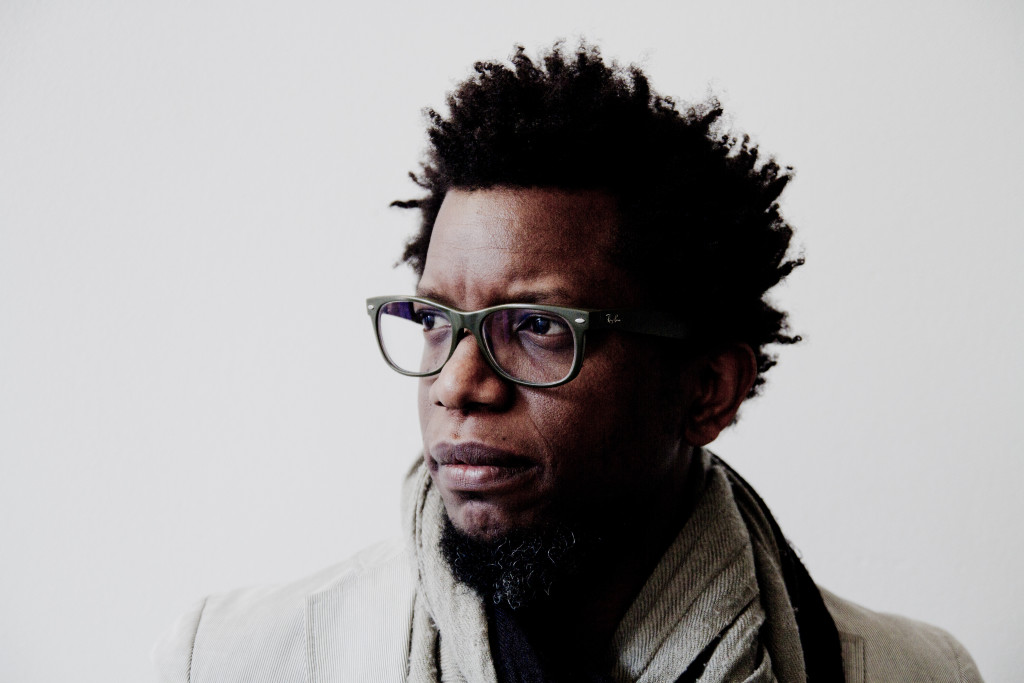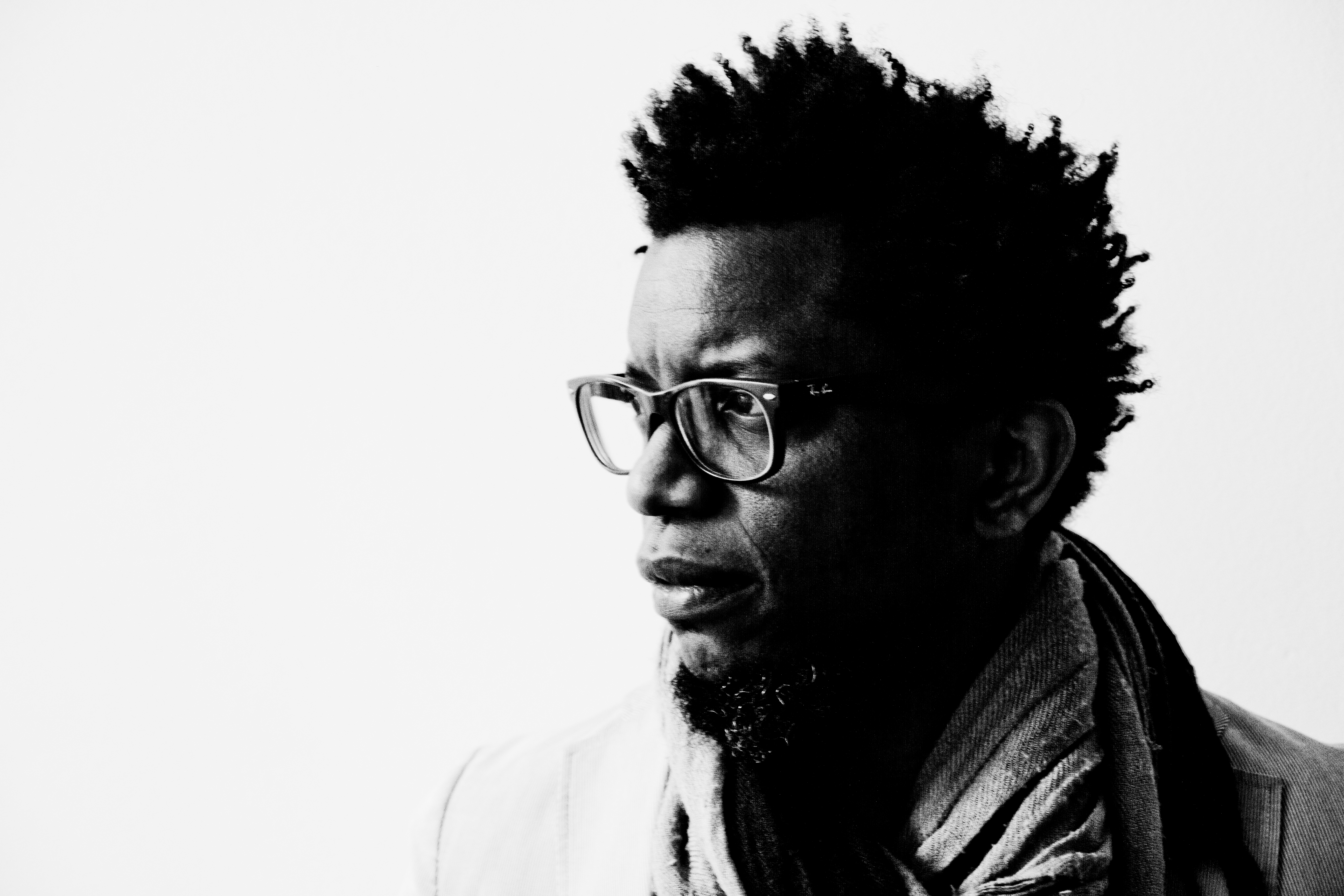review and interview by Jamila Campagna
Can a sound bring the signs of a private experience and of a collective memory too?
Can music be the expression of the whole aesthetic field?
Cuban pianist Aruán Ortiz‘s Hidden Voices is a concept album – realized in trio format with Eric Revis and Gerald Cleaver – that sums up a kind of musical research, which goes step by step from his personal life experience to the meaning of cultural heritage, passing through the study of form. Hidden Voices is not only an avant-garde jazz album that represents Aruán Ortiz’s cosmopolitan and experimental attitude; Hidden Voices is a narration. The narration comes around a double bond: the impact of contemporary music in Caribbean sounds becomes the start to incorporate traditional Cuba-Haitian music into his music production. And here he makes a sort of magnetic field where Cubanism is the center, the spot where a process is shaped by integrating different influences.
A journey of 10 tracks to discover how geometry and history are topics of the same speech. The combination of elements is both an ideological fact and the approach to a deep research, looking for the creation of a new authentic sound. Fractal Sketches is the explosive opening and Uno, Dos y Tres, Que Paso Más Chevere is the traditional Cuban tune that closes the series. In the middle, natural structures find their contiguity with seasons in Arabesques of a Geometrical Rose, split in two tracks – Spring and Summer -; the standards Open&Close and The Sphynx find Ortiz’s interpretation; Joyful Noises owns the brightness of inventiveness; the third track Hidden Voices – Caribbean Vortex is the key: the rhythmic base is used as an instrument and leads us through the route of avant-garde art, where music is the condensation of the universe and improvisation is the way to walk through it.
I met Aruán Ortiz in Milan the last 20th March, the day before his concert in the city. I didn’t just met the pianist, violist, composer, producer, born in Cuba, Brooklyn-based and internationally acclaimed; I met a generous and friendly person who purely enjoyed to talk about is point of view about art, to show me which is his musical mission. I met a researcher, I met a jazz Master.
1. Can you tell us about your musical path from Cuba to New York?
I left Cuba in 1996; I was playing and studying in Cuba and I had the opportunity to go to Spain to study classical piano under the tutelage of a great teacher, the Cuban pianist Cecilio Tieles; after studying with Cecilio, I studied in Barcelona, under the bassist Oratio Fomero at the Aula de Musica Moderna y Jazz; through this school I had the opportunity to make an audition and so I got a scholarship for Berklee College of Music in Boston. Once in Boston I started to play with so many people, also from New York, until the moment I had the opportunity to play piano and keyboards with Wallace Roney. He encouraged me to move to New York. The New York jazz scene represents my growth as human being so as an artist and also my exposure to the international jazz scene.
2. Would you agree with me if I say that your music is a research?
My music has a lot of influences, I would say that coming from Cuba, living and studying in Spain and also moving to United States, studying there and sharing the stage with those I consider the greatest alive jazz musicians nowadays, I’ve been absorbing a lot of ideas and material from them and then I re-shaped my music in a very personal way. I try to absorb ideas from an array of different artistic and aesthetic not necessarily music relate sources. So my work is to translate into music composition, into improvisation, in creative music, all the parameters and principal fundaments that I could find in other art forms. I’m fascinated to talk with other artists, to talk about forms, how they see and conceive and think, what forms mean for them. In my latest album Hidden Voices, I was very interested in architecture, how could you translate that into music composition, how could you use an element that you could find in design, in the nature architecture – like fractals, reflections – how could you bring symmetry, how could you bring a mirror and distorted images into music. My creative process is about that: combining different elements and filter them through my creative process and make them converge in one unique voice, in one unique sound.
At the same time I have a pulse that define my Cubanism, like, for example, the piece Caribbean Vortex – Hidden Voices: I was trying to visualize how a vortex moves in the Caribbean, so I used a lot of Caribbean rhythms and at the same time I studied how the wheel wind could move in different ways to create a deceptive resolution; it was very attractive for me to be able to do a kind of cell transplant.
3. What’s the importance of improvisation in your music?
Improvisation is a very important aspect of creating music; I combine written material with improvised material in the way that you don’t know where the written material finishes and where the improvised material starts. I try to incorporate improvisation within the structure itself, without any separation from the written part. So it gives a different approach to the music itself: you’re always generating music at the moment for the moment. That’s what I call alive music. You don’t see that there is a melody and then improvisation and then another melody because I could re-organize all those information till there is no order of preference and no order of importance. Improvisation and written material have the same priority into the design of the composition. It’s all part of the same collage.

4. Which is the main concept at the base of your new album Hidden Voices?
I would say that one of the Hidden Voices main concept behind the album comes from my inspiration and fascination for the work of the French – Greek composer Iannis Xenakis. He wrote a book called Music and Architecture, I curated a series of concerts in New York in 2013 and entitled it Music and Architecture after it. Most of the tunes that appear in my last album were sketched in 2013: titles like Fractal Sketches, Analytical Symmetry, Arabesque of Geometrical Rose were part of that series. So, when I had the opportunity to put this album together, I orchestrated and re-arranged that series for a trio format.
Also, in 2014, I got a grant to go to Cuba to study rhythm and culture with Cuban-Haitian communities, to study their music and its impact on cultural life, in Santiago de Cuba, my hometown; when I was there I had an amazing time working with them, taking lessons, watching them playing and rehearsing. I got a lot of information from those communities.
One of my main mission is expanding and bringing Cuban-Haitian or Afro-Haitian rhythm into a more contemporary vocabulary. I’m trying to use that raw material and filter it into my creative process.
I would also say that one of my main musical references of the last few years is Muhal Richard Abrams and names like Henry Threadgill, Roscoe Mitchell, George Lewis, all from AACM (Association for Advancement of Creative Musicians). People with a very uncompromised voice and very committed to their creative process. This is another angle that is reflected into my music: Music and Architecture, Cuban Haitian influences and avant-garde jazz.
5. What about this charming and mysterious title: Hidden Voices.
Well, Hidden Voices have no secret. You could interpret that title from different points of view. The main one is, I guess, the first piece in my record that is entitled Caribbean Vortex – Hidden Voices. It’s about a Caribbean vortex because I was using, as I said, a Cuban-Haitian rhythm pattern, using percussions and claves. They were permutated and then the trio comes on top permutating again what was already a permutation. So Hidden Voices is referred to the base which brings the melody but you could not really understand it because it’s hidden into everything that was happening in top of that.
Hidden Voices is also a tribute to those individuals that have been a key figure in our carriers or in our lives and they remain themselves unknown, hidden, but their guidance and their advices had a huge impact on our develop as human being or as a professional. Hidden Voices are also all those cultures we come from, our ancestors that through orally transmission have been defining our heritage and also who we are right now, why we speak the way we speak, why we have those influences that we have. So that’s the main concept of Hidden Voices.
Cover picture: Aruan Ortiz in Milan, ph. IL MURO








